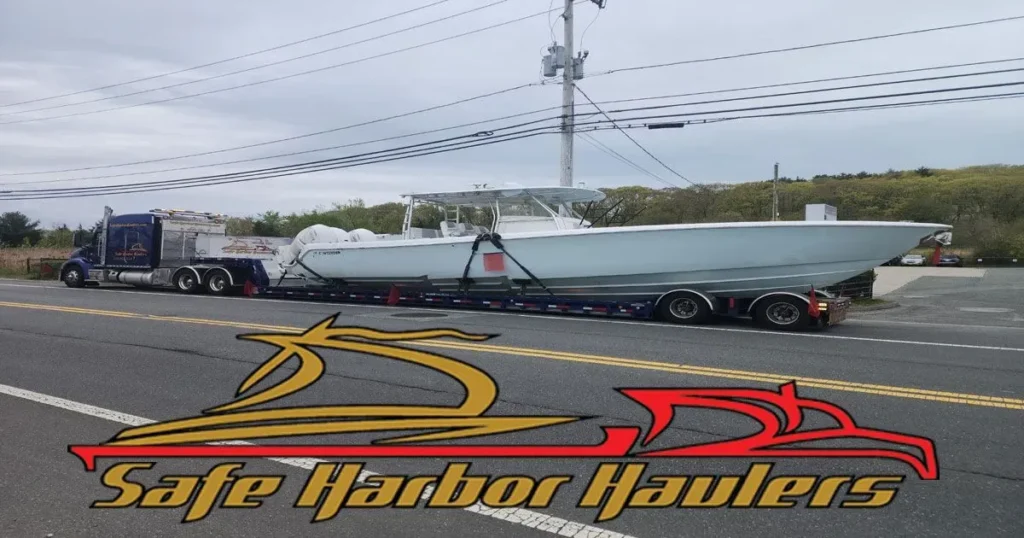The Ultimate Guide to Boat Transport: Tips for Safe and Hassle-Free Shipping
Whether you’re moving to a new location, purchasing a boat from out of state, or preparing to sail new waters, boat transport is a critical service that ensures your vessel arrives safely, securely and on time. In this guide, we’ll explore everything you need to know about boat transport, from choosing the right provider to preparing your boat for shipping.
Why Choose Professional Boat Transporter?
Transporting a boat requires specialized equipment, expertise, and careful planning. Professional boat transport companies offer several advantages:
• Safety: Experts use proper techniques, tools and equipment to safely secure and transport your boat.
Professional boat transporters utilize specialized commercial long haul transport trailers that are specifically designed to travel 100,000 of miles per year or more.
• Efficiency: Save time and avoid the stress of navigating complex routes and permits.
Transport of oversize boats requires specific routing and permits everywhere traveled. There are many routes throughout the United States that do not allow oversize loads.
• Peace of Mind: Insurance coverage protects your investment during the journey.
Legal and professional transporters have boat specific commercial cargo insurance coverage with increased or no radiuses at all.
Types of Boat Transport Services
Services vary depending on your needs:
1. Overland Transport:
How to Choose the Right Boat Transport Company
Selecting the right provider is crucial for a smooth experience. Here’s what to look for:
• Experience:
Opt for a company with a proven track record in handling boats similar to yours. There are many transporters out there that will attempt to transport something they have no business transporting, so be careful.
• Insurance:
Confirm that the provider offers commercial cargo coverage for potential damages. Commercial cargo insurance is the only insurance that covers damage to your boat when you hire a transporter. Further, once you receive the providers Certificate of Insurance from their Insurance Company, and only from their Insurance Company, you should always forward it to your Insurance Company to have them verify its authenticity.
• Reviews:
Check online reviews and testimonials to gauge customer satisfaction. You should also check with the pick up and receiving yards to see if they have any past interactions with your chosen transporter.
Preparing Your Boat for Transport
Proper preparation reduces the risk of damage during shipping. These are some steps to follow, your transporter may have more:
1. Clean the Boat:
Remove dirt and debris to spot any pre-existing damage.
2. Secure Loose Items:
Remove personal belongings, electronics, and any detachable parts.
3. Drain Fluids:
Empty water and waste tanks to reduce weight and comply with regulations.
4. Protect Fragile Areas:
Wrap or secure delicate components to prevent damage.
5. Inspect and Document:
Take photos of your boat before transport for insurance purposes.
Costs of Boat Transport
The cost of boat transport depends on several factors:
• Service Type:
Short notice or specific dates cost more. If you can work with your transporters schedule you can save on transport cost.
• Distance:
Longer hauls typically cost more.
• Boat Size:
Larger boats require special routes and, depending on the dimensions, may require route surveys, pilot cars or police escorts.
• Season:
Transport demand can influence pricing, with peak seasons generally being more expensive.
• Permits:
Over-sized boats require special permits, adding to the overall cost.
Top Tips for Hassle-Free Boat Transport
• Book Early:
Secure your transport provider in advance, especially during peak seasons. It is very normal for the transporter to be booked up to 6 – 12 weeks in advance.
• Communicate Clearly:
Share detailed information about your boat along with its pick up and destination locations.
• Signed Contract:
Ensure you receive a clearly written contract signed by your provider spelling out the terms and conditions of the transport along with the cost.
• Verify Insurance:
Double-check the insurance coverage provided by the transport company.
• Track Progress:
Many transport providers offer tracking systems, so you can monitor your boat’s journey.
Why Trust Safe Harbor Haulers?
At Safe Harbor Haulers, Eric and Brayden specialize in providing reliable, efficient, and safe boat transport services. With years of experience and a commitment to customer satisfaction, we ensure your vessel is in expert hands. Whether you need local or long-distance transport, we have the expertise to handle it all.
Get a Free Quote Today!
Ready to move your boat? Contact Safe Harbor Haulers today for a free, no-obligation quote. Let us make your boat transport experience stress-free and seamless.


